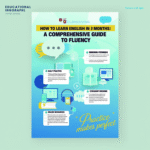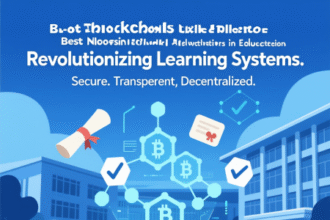The Global Education Summit stands as a pivotal moment in shaping the future of education worldwide. Convening thought leaders, policymakers, educators, and innovators, this landmark event addresses pressing challenges and unveils transformative solutions to ensure inclusive, equitable, and technology-driven education systems. We present a comprehensive exploration of the Global Education Summit key highlights, offering an in-depth analysis of its sessions, outcomes, and implications for global learning ecosystems. This article delves into the summit’s core themes, groundbreaking initiatives, and actionable strategies, providing a detailed resource for education stakeholders seeking to drive systemic change.
- Setting the Stage: Why the Global Education Summit Matters
- Opening Plenary: Envisioning a Tech-Enabled Education Future
- Tech for Outbound Mobility: Redefining the Student Journey
- Lightning Talks: Innovations Shaping Global Education
- Breakout Sessions: Practical Strategies for Transformation
- Ethics of EdTech: Building Responsible Solutions
- Financing Education: Addressing the Global Funding Gap
- Closing Plenary: A Call to Action for Global Education
- Case Studies: Real-World Impact of Summit Initiatives
- The Role of Youth in Shaping Education
- Technology as a Force Multiplier
- Challenges and Opportunities Ahead
- Recommendations for Stakeholders
- Frequently Asked Questions (FAQs)
Setting the Stage: Why the Global Education Summit Matters
The Global Education Summit serves as a global platform to address the evolving needs of education in a rapidly changing world. With challenges like the digital divide, post-pandemic learning recovery, and climate-related disruptions, the summit fosters collaboration among governments, institutions, and private sectors to create resilient education systems. Held annually, the summit brings together diverse voices to discuss how education can empower individuals, drive economic growth, and address global issues like poverty and inequality.
In 2025, the summit emphasized technology integration, equitable access, and sustainable financing, aligning with the United Nations’ Sustainable Development Goal 4 (SDG 4): ensuring inclusive and equitable quality education. We explore how the summit’s outcomes are shaping policies and practices, offering a roadmap for educators, policymakers, and technologists to navigate the complexities of modern education.
Key Themes Driving the Summit
The Global Education Summit focused on several transformative themes, each addressing critical aspects of education reform:
-
Technology Integration: Leveraging artificial intelligence (AI), data systems, and digital platforms to enhance learning outcomes and scalability.
-
Equity and Inclusion: Ensuring education reaches marginalized communities, including girls, rural populations, and students with disabilities.
-
Sustainable Financing: Mobilizing resources to address funding gaps exacerbated by global crises like COVID-19 and climate change.
-
Global Collaboration: Fostering cross-border partnerships to support international student mobility and virtual learning.
-
Youth Empowerment: Amplifying the voices of young leaders to advocate for education reform and innovation.
These themes underpinned the summit’s sessions, guiding discussions and shaping actionable outcomes. We now delve into the specific highlights of each key session, showcasing how these themes translated into real-world impact.
Opening Plenary: Envisioning a Tech-Enabled Education Future
The summit’s opening plenary, titled Global Impact Needs Global Tech, set a visionary tone. Leaders from academia, industry, and government explored how technology is reshaping education ecosystems. The session emphasized that global education cannot scale equitably without digital transformation. Key takeaways included:
-
AI’s Role in Personalization: AI-driven tools are enabling tailored learning experiences, adapting content to individual student needs. For instance, adaptive learning platforms analyze student performance in real time, adjusting difficulty levels to optimize engagement.
-
Data-Driven Decision Making: Institutions are using data analytics to track student progress, identify at-risk learners, and allocate resources efficiently. Examples include predictive models that flag potential dropouts, allowing timely interventions.
-
Scalable Impact: Digital platforms like Massive Open Online Courses (MOOCs) are expanding access to quality education, particularly in underserved regions. Platforms like Coursera and FutureLearn were highlighted for their role in democratizing learning.
The plenary underscored that technology is not a luxury but a necessity for inclusive education. Speakers cited examples of institutions using AI to support multilingual education, ensuring non-English-speaking students can access high-quality resources. This session laid the foundation for the summit’s focus on actionable, tech-forward solutions.
Tech for Outbound Mobility: Redefining the Student Journey
The session Tech for Outbound Mobility: Beyond the Brochure explored how technology is transforming the study-abroad experience. From recruitment to reintegration, digital tools are streamlining every stage of the student journey. We highlight the session’s key insights:
-
Recruitment CRMs: Customer Relationship Management (CRM) systems are helping institutions target prospective international students with personalized campaigns. For example, universities use CRM analytics to identify students’ interests, tailoring outreach to align with their academic goals.
-
Virtual Pre-Departure Support: Platforms like Zoom and bespoke apps provide pre-departure briefings, cultural orientation, and language training, reducing barriers for first-time travelers.
-
Re-Entry Tools: Digital portfolios and career platforms assist returning students in translating their international experiences into professional opportunities. Tools like LinkedIn and e-portfolios were cited as critical for showcasing global competencies.
The session revealed a shift in mindset: institutions must prioritize student-centric technology over traditional marketing. Data-driven personalization ensures students receive support tailored to their needs, enhancing satisfaction and success rates.
Lightning Talks: Innovations Shaping Global Education
The Lightning Talks: Innovation Worth Scaling session showcased rapid-fire presentations from educators, startups, and hybrid collaborations. Each five-minute talk ended with a provocative question, sparking dialogue among attendees. We summarize the standout innovations:
-
AI-Powered Tutoring: A startup presented an AI tutor that provides 24/7 support, answering student queries in multiple languages. The question posed: How can we ensure AI tutors don’t replace human connection in education?
-
Blockchain Credentials: A university shared its blockchain-based credentialing system, ensuring secure, verifiable academic records. The question: Can blockchain scale to replace traditional degree systems globally?
-
Gamified Learning: An EdTech company demonstrated gamified assessments that boost student motivation. The question: How do we balance engagement with academic rigor?
These talks highlighted the diversity of global education innovations, from AI to blockchain, and underscored the need for scalable, ethical solutions. Attendees left inspired to pilot these ideas in their institutions.
Breakout Sessions: Practical Strategies for Transformation
The summit’s breakout sessions offered hands-on workshops, allowing participants to dive deep into specific topics. We explore two key sessions: Designing COIL & Global Learning at Home Through Tech and Advising 2.0: Redesigning International Student Support Systems.
Collaborative Online International Learning (COIL)
The COIL session focused on virtual exchange programs that foster global mindsets without physical travel. Key points included:
-
Platform Integration: Tools like Microsoft Teams and Blackboard facilitate cross-border collaboration, connecting students from different countries for joint projects.
-
Faculty Engagement: Successful COIL programs require faculty training to design inclusive, culturally sensitive curricula. Challenges include time zone differences and varying technological access.
-
Scalability: Institutions are scaling COIL through partnerships, creating networks of universities that share resources and expertise.
The session emphasized that COIL programs are cost-effective alternatives to traditional study abroad, making global education accessible to diverse student populations.
Modernizing International Student Advising
The Advising 2.0 session showcased how technology is transforming student support. Highlights included:
-
AI-Enabled Onboarding: Chatbots provide 24/7 answers to common questions, streamlining visa processes and cultural adaptation.
-
Multilingual Support: Platforms like Duolingo and AI translation tools ensure non-English-speaking students receive accessible guidance.
-
Human-Centric Design: Despite automation, advisors emphasized maintaining personal connections to support student well-being.
These innovations demonstrate how technology can enhance, rather than replace, human interaction in advising, ensuring students feel supported throughout their journey.
Ethics of EdTech: Building Responsible Solutions
The Ethics of Global EdTech session addressed critical challenges in technology adoption. With AI and data systems reshaping education, ethical considerations are paramount. We outline the session’s key discussions:
-
Algorithmic Bias: AI tools can perpetuate biases if not designed inclusively. For example, facial recognition in proctoring software has faced criticism for misidentifying non-Western faces.
-
Data Privacy: Institutions must comply with regulations like GDPR to protect student data, especially in cross-border programs.
-
Accessibility: Digital platforms must accommodate students with disabilities, incorporating features like screen readers and captioning.
The session proposed a framework for ethical EdTech development, emphasizing transparency, inclusivity, and accountability. This framework is critical for ensuring technology serves all learners equitably.
Financing Education: Addressing the Global Funding Gap
Sustainable financing was a recurring theme, with sessions exploring innovative funding models. The Global Education Summit highlighted the following strategies:
-
Debt-to-Education Swaps: Over 30 countries spend significant portions of their budgets on debt servicing. Proposals included redirecting debt payments to education investments, potentially freeing billions for learning.
-
Private Sector Partnerships: Tech giants like Google and Microsoft are investing in education, offering in-kind contributions like cloud credits and training programs.
-
Youth Advocacy: GPE Youth Leaders called for increased domestic financing, urging governments to allocate at least 20% of public spending to education.
These strategies underscore the need for creative financing to close the global education funding gap, estimated at $148 billion annually by UNESCO.
Closing Plenary: A Call to Action for Global Education
The closing plenary, What’s Next for Global Ed + Tech, united leaders to envision a future where education is digitally enabled, ethically grounded, and equitably scaled. Key takeaways included:
-
Co-Design for Impact: Institutions, EdTech developers, and policymakers must collaborate to create solutions that address local needs while scaling globally.
-
Ethical Innovation: Technology must prioritize inclusion, ensuring no student is left behind due to economic, geographic, or technological barriers.
-
Actionable Commitments: Over 130 countries pledged to reboot their education systems, focusing on digital transformation and increased funding.
The plenary concluded with a call to action: education stakeholders must act swiftly to implement summit outcomes, leveraging technology to build a more inclusive future.
Case Studies: Real-World Impact of Summit Initiatives
To illustrate the summit’s impact, we present case studies of initiatives inspired by past summits:
-
Kenya’s Education Reforms: Following the 2021 Global Education Summit, Kenya increased its education budget by 15%, focusing on teacher training and digital infrastructure. This led to a 20% increase in rural school enrollment.
-
Ukraine’s Digital Learning: Amid conflict, Ukraine partnered with tech companies to digitize education, enabling 2 million students to continue learning remotely.
-
India’s EdTech Boom: Indian startups, inspired by summit discussions, developed affordable learning apps, reaching 10 million underserved students.
These examples demonstrate how summit outcomes translate into tangible improvements, reinforcing the importance of global collaboration.
The Role of Youth in Shaping Education
Youth leaders played a pivotal role, advocating for increased investment and systemic reform. Their contributions included:
-
Amplifying Voices: Youth leaders used social media campaigns like #RaiseYourHand to highlight education challenges, reaching millions globally.
-
Policy Input: Young advocates met with policymakers, proposing solutions like early childhood education investments and teacher capacity building.
-
Innovation Leadership: Youth-led startups presented solutions like peer-to-peer learning platforms, addressing gaps in traditional education.
Their involvement underscores the summit’s commitment to inclusivity, ensuring young people shape the future they will inherit.
Technology as a Force Multiplier
The summit highlighted technology’s role as a force multiplier in education. Key technologies driving change include:
-
AI and Machine Learning: AI tools like adaptive learning systems and chatbots enhance personalization and accessibility.
-
Virtual and Augmented Reality: VR/AR platforms create immersive learning experiences, simulating real-world scenarios for students.
-
Cloud Computing: Cloud-based platforms enable scalable, cost-effective access to educational resources, particularly in low-resource settings.
These technologies are bridging gaps, making global education more accessible and effective.
Challenges and Opportunities Ahead
While the summit showcased progress, challenges remain:
-
Digital Divide: Over 2.6 billion people lack internet access, limiting digital education’s reach.
-
Teacher Training: Educators need professional development to integrate technology effectively.
-
Funding Shortfalls: Despite pledges, global education funding remains insufficient to meet SDG 4 targets.
Opportunities include leveraging public-private partnerships, scaling successful pilots, and prioritizing inclusive design to overcome these barriers.
Recommendations for Stakeholders
To build on the Global Education Summit outcomes, we recommend:
-
Invest in Infrastructure: Governments should prioritize broadband access and device distribution to close the digital divide.
-
Enhance Teacher Training: Professional development programs should focus on digital literacy and inclusive pedagogy.
-
Foster Partnerships: Collaborate with tech companies and NGOs to scale innovative solutions.
-
Prioritize Equity: Design policies that address the needs of marginalized groups, including girls and students with disabilities.
-
Engage Youth: Involve young leaders in policy design and implementation to ensure relevance and impact.
Frequently Asked Questions (FAQs)
-
What is the Global Education Summit?
The Global Education Summit is an annual event convening global leaders to address education challenges and promote equitable, technology-driven solutions. -
When was the 2025 Global Education Summit held?
The 2025 summit took place on October 28, 2025, as part of the Global Impact Conference. -
Who organizes the Global Education Summit?
The summit is co-hosted by organizations like the Global Partnership for Education (GPE) and governments, such as Kenya and the UK in past years. -
What are the main goals of the Global Education Summit?
The summit aims to advance SDG 4 by promoting inclusive education, sustainable financing, and technology integration. -
How does the summit address the digital divide?
It promotes investments in broadband infrastructure and affordable devices to ensure access for underserved communities. -
What role does technology play in the summit’s outcomes?
Technology is central, with sessions focusing on AI, data systems, and digital platforms to enhance learning and scalability. -
How can institutions participate in the summit?
Institutions can register as attendees, submit speaker proposals, or sponsor the event to engage with global education leaders. -
What is COIL, and why is it important?
Collaborative Online International Learning (COIL) connects students across borders for virtual collaboration, making global education accessible. -
How does the summit support international students?
It explores technologies like AI chatbots and multilingual platforms to streamline advising and cultural adaptation. -
What ethical concerns were raised at the summit?
Discussions focused on algorithmic bias, data privacy, and ensuring accessibility in EdTech solutions. -
How are youth involved in the summit?
Youth leaders advocate for education reform, participate in panels, and drive social media campaigns like #RaiseYourHand. -
What funding solutions were proposed?
Proposals included debt-to-education swaps, private sector partnerships, and increased domestic education budgets. -
How does the summit align with SDG 4?
It supports SDG 4 by promoting inclusive, equitable education through policy commitments and technological innovation. -
What are some examples of summit-inspired initiatives?
Examples include Kenya’s education budget increase, Ukraine’s digital learning platforms, and India’s EdTech startups. -
How can stakeholders act on summit outcomes?
Stakeholders can invest in infrastructure, train educators, foster partnerships, and prioritize equity in education policies.


















